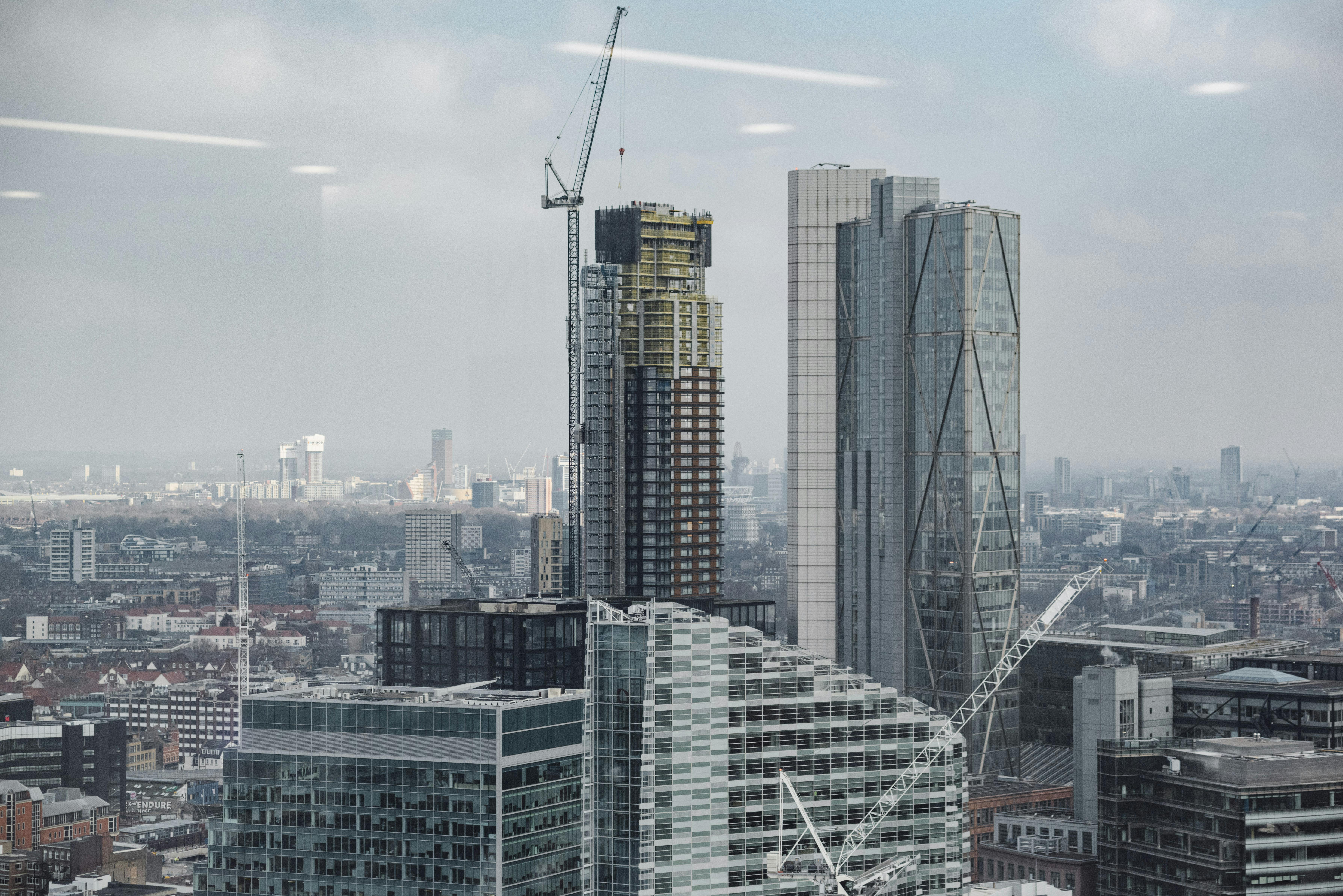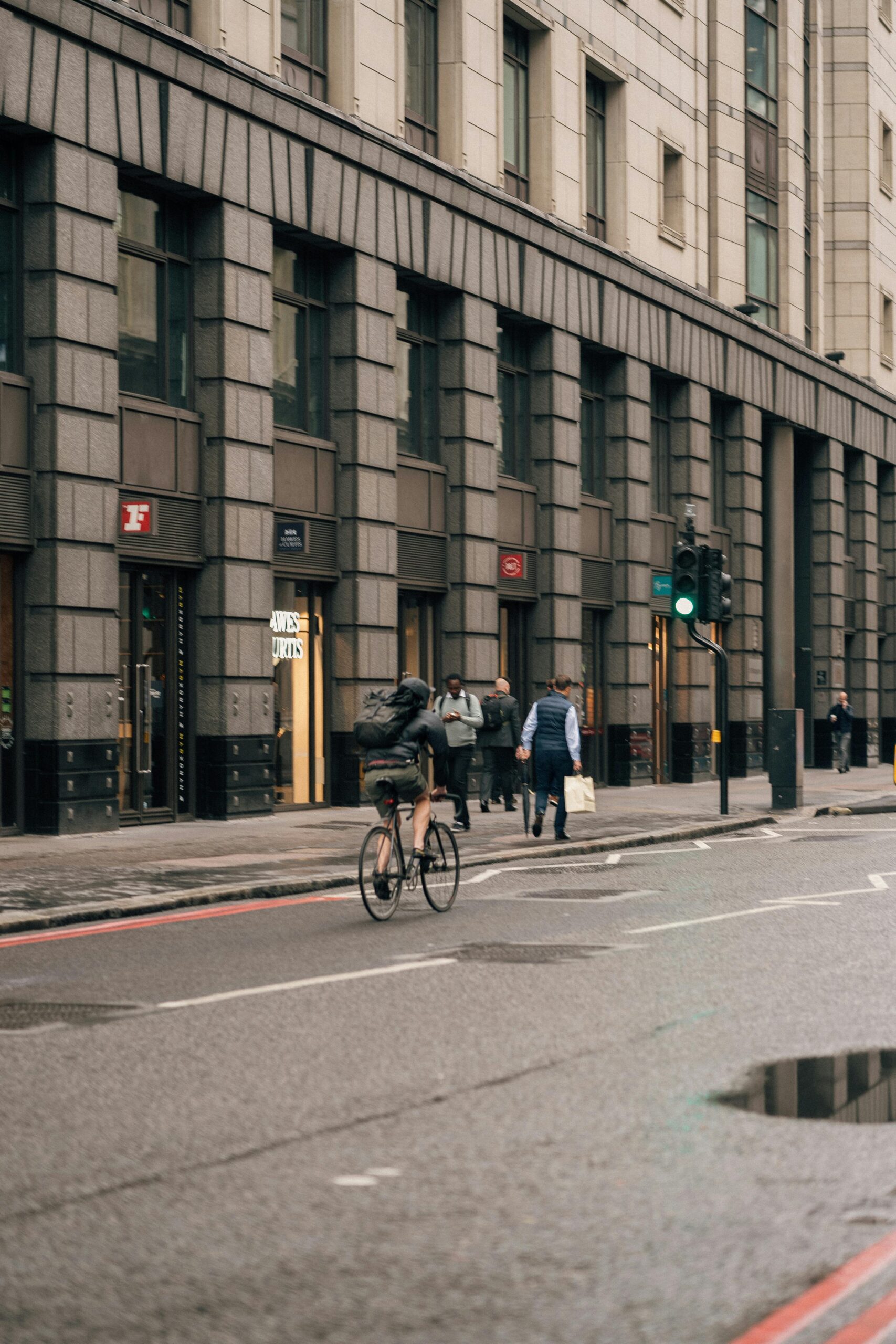Are you curious about what the Met Office weather London forecast has in store for you this week? London’s weather can be as unpredictable as ever, making it essential to stay updated with the latest London weather forecast from trusted sources. Whether you plan a stroll along the Thames or a day out in Hyde Park, knowing the detailed weather updates London will help you prepare for sudden changes. Have you ever wondered why London experiences such sudden shifts in temperature and rain? The Met Office weather London today provides real-time information that can help you avoid getting caught in unexpected showers or chilly winds. With climate patterns evolving, the question remains: how reliable are the current London weather predictions? Stay ahead of the curve with accurate, up-to-date forecasts that include everything from temperature highs and lows to wind speeds and rainfall chances. Discover how the Met Office London weather alerts can keep you safe and ready, no matter the season. Don’t miss out on the latest trends in London weather news and find out how this impacts your daily plans. Ready to explore the secrets behind London’s ever-changing weather? Dive into the fascinating world of meteorology with the most trusted Met Office weather updates for London today!
How Accurate Is the Met Office Weather London Forecast in 2024?

Met Office Weather London: What’s Really Going On?
If you ever wonder about the met office weather London updates, you’re definitely not alone. London weather is like a box of chocolates — you never knows what you gonna get. One minute it’s sunny and warm, next moment it’s pouring cats and dogs. Honestly, it’s pretty unpredictable, and sometimes I feels like the Met Office just throw darts at a board to make their forecasts. Not really sure why this matters, but people seem to be obsessed with checking the latest weather updates, so let’s dive in.
Understanding Met Office Weather London Data
The Met Office, if you didnt know, is the UK’s national weather service and they provide all sorts of forecasts, warnings, and climate information. Their met office weather London reports are usually updated several times a day, giving you a good idea what to expect outside your window. But sometimes it feels like they predict one thing and the actual weather does another. For example, last week, the forecast said sunny spells all day, but I got drenched in rain. Go figure.
Here’s a quick table showing typical weather elements the Met Office covers for London:
| Weather Element | Description | Typical London Range |
|---|---|---|
| Temperature | How hot or cold it is | 5°C to 25°C (varies with season) |
| Precipitation | Rain, drizzle, snow amount | 0 to 10 mm daily |
| Wind Speed | How fast the wind blows | 5 to 25 mph |
| UV Index | Strength of ultraviolet radiation | 0 (low) to 7 (high) |
| Humidity | Moisture in the air | 60% to 90% (usually quite humid) |
Maybe it’s just me, but I always look at the humidity and wind speed when planning my day. If it’s super humid, I know I’m gonna feel sticky and uncomfortable, even if the temperature isn’t that high.
The Challenges of Predicting London Weather
London’s weather is famously tricky, and the met office weather London forecasts sometimes feels like they’re taking a wild guess. There’s a few reasons for this:
- London’s location near the coast means it gets influenced by sea breezes and sudden weather changes.
- Urban heat island effect makes the city warmer than the surrounding countryside, which messes with temperature predictions.
- The complex mix of clouds, rain fronts, and sunshine often overlap, making it hard to say exactly what will happen.
And honestly, don’t get me started on the rain forecasts. Sometimes they say there’s a 30% chance of rain, but it ends up raining cats and dogs. Other times, the forecast is for rain but the skies stay perfectly clear. It’s like the weather has a mind of its own.
Practical Tips for Using Met Office Weather London Forecasts
Even with all the unpredictability, the met office weather London updates can be super useful if you use them right. Here’s some tips I picked up that might help:
- Check multiple updates during the day — weather can change fast in London, so morning forecast may be different by afternoon.
- Use the hourly forecast for outdoor plans — if you need to run errands or walk your dog, knowing when rain might start helps.
- Pay attention to weather warnings — the Met Office issues alerts for heavy rain, strong winds, or heatwaves, which you shouldn’t ignore.
- Combine forecast data with personal experience — for instance, if you know your area tends to get fog, be prepared even if the forecast doesn’t mention it.
- Don’t rely solely on the temperature — check wind chill and humidity too, because these can affect how you actually feels.
To make it easier, here’s a little checklist you can use before stepping out:
| Step | Action | Why it matters |
|---|---|---|
| 1. Look at temperature | Is it cold, mild, or hot? | Dress accordingly |
| 2. Check precipitation | Rain or no rain? | Bring umbrella or raincoat |
| 3. Check wind speed | Is it windy? | Wind can make it feel colder |
| 4. Look for warnings | Any alerts issued? | Stay safe during extreme weather |
| 5. Check UV index | High UV? | Use sunscreen if outside |
Long-Term Trends and Climate Change Impact
Something you don’t hear much about when checking met office weather London is how climate change is slowly transforming what weather we can expect. Over the years, London’s been experiencing warmer summers and milder winters. Rainfall patterns also seem to be shifting, with more intense rain
Top 7 Surprising Weather Patterns Predicted by Met Office London This Week

When it comes to the Met Office weather London forecasts, you might think it’s all just guesswork, right? But surprisingly, these forecasts often get it right, more or less. London’s weather is famously unpredictable — sunny one minute, raining the next, and sometimes both in the same hour! So trusting the Met Office can sometimes feels like a bit of a gamble. But hey, better than nothing, I guess.
What’s the Met Office Actually Telling Us About London Weather?
The Met Office weather London updates usually cover a bunch of stuff like temperature, chance of rain, wind speed, and even UV levels. But honestly, half the time you’re just hoping it won’t pour on your way to work. Here’s a quick breakdown of what the usual forecast might look like:
| Parameter | Typical London Values | Notes |
|---|---|---|
| Temperature | 8°C to 22°C | Varies wildly by season |
| Rain Chance | 20% to 80% | Bring umbrella, just in case! |
| Wind Speed | 5 to 20 mph | Could mess up your hair badly |
| UV Index | 1 to 5 | Low to moderate; sunscreen? Meh |
Not really sure why this matters, but the Met Office also sometimes includes “feels like” temperature, which is supposed to give a better idea of how cold or warm it actually is. But between you and me, I think it’s just a fancy way to confuse people more.
Why London Weather Is So Hard to Predict?
London is located in a spot where all sorts of weather systems collide. You get Atlantic winds mixing with continental air, and then the city itself messes things up a bit due to the “urban heat island effect” (fancy term for city being warmer than countryside). So the Met Office weather London forecasts are basically trying to untangle a weather soup.
Maybe it’s just me, but I feel like the forecasts often says “light rain” and then you get drenched within five minutes. Not complaining though, it’s London, after all — rain is just part of the charm (or misery, depends how you look at it).
How To Use Met Office Weather London Forecasts Effectively
If you’re someone who hates getting caught in the rain (who doesn’t?), here’s a little cheat sheet how to use these forecasts without losing your mind:
- Check the hourly update: London weather can change fast, so daily forecasts might not cut it.
- Look for rain probability over 50%: That usually means pack an umbrella or wear waterproofs.
- Mind the wind speed: Gusty winds can make it feel much colder than the thermometer says.
- Don’t trust the sunshine promises blindly: Clouds can roll in quicker than you can say “picnic canceled.”
Seasonal Weather Patterns in London
Let’s break down the London weather by seasons, because it really helps to know what to expect:
| Season | Average Temp (°C) | Rainfall (mm) | Common Weather |
|---|---|---|---|
| Spring | 10-15 | 40-50 | Showers, some sunny spells |
| Summer | 18-22 | 30-40 | Warm, sometimes hot, occasional showers |
| Autumn | 11-16 | 50-60 | Rainier, windier, cooler |
| Winter | 2-8 | 40-50 | Cold, damp, possibility of frost |
Honestly, if you don’t like the weather in London, just wait five minutes — it’ll probably change. It’s kinda like a bad Tinder date, you never know what you’re gonna get!
Practical Tips for Dealing with London Weather (Based on Met Office Data)
Here’s some practical advice, if you want to survive life in London with minimal soggy disasters:
- Layer up: The temperature can drop or rise unexpectedly — layers are your best friends.
- Always carry a small umbrella: No excuses. Even if the forecast says no rain.
- Wear waterproof shoes: Your feet will thank you.
- Check the Met Office weather London app or website daily: It might save you from getting soaked.
- Keep a windbreaker handy: Wind makes everything feel colder and more miserable.
Fun Fact Sheet: Weird London Weather Moments Reported by Met Office
| Date | Event | Description |
|---|---|---|
| 12 Aug 2003 | Heatwave | Record-breaking temperatures over 38°C |
| 25 Dec 2010 | Snow | Rare |
What Does the Latest Met Office Weather London Update Reveal About Upcoming Storms?
If you ever been curious about what the met office weather London really looks like day-to-day, you’re not alone. London is a city that sometimes feels like it have its own weather personality, constantly changing, never quite predictable. People always talking about rain and sun, but honestly, it can be hard to keep track sometimes. Maybe it’s just me, but I feel like the weather forecasts don’t always hit the mark the way you expect them to.
What’s Up With London’s Weather Anyway?
London’s weather is a bit of a mixed bag, and the met office weather London reports try their best to keep up. You know, one minute its bright and sunny, the next, it’s pouring cats and dogs. The Met Office, which is the UK’s national weather service, provides detailed forecast that lots of people rely on. But have you ever noticed how sometimes the weather app says “sunny all day” and then you get drenched in a sudden downpour? Yeah, me too.
To give you a rough idea, here’s a simple table I threw together showing average weather conditions in London across the year according to the met office weather London data:
| Month | Avg Temperature (°C) | Avg Rainfall (mm) | Notes |
|---|---|---|---|
| January | 5 | 49 | Cold and often grey |
| April | 11 | 43 | Spring showers, sometimes sunny |
| July | 19 | 38 | Warm, occasional heatwaves |
| October | 13 | 54 | Rainy and windy |
| December | 6 | 48 | Cold with possibility of frost |
Not really sure why this matters, but if you planning a trip or just want to know what to wear, this kind of data is super helpful. The met office weather London often gets updated every hour, and they use all sorts of technology like satellites and radar to keep their forecasts as accurate as possible.
How To Read The Met Office Weather London Reports
Sometimes, the weather reports can look like a foreign language. Lots of jargon like “pressure systems,” “dew point,” and “UV index,” which might make you scratch your head. Here’s a little cheat sheet to help you figure out what they actually mean:
- Pressure Systems: High pressure usually means good weather, low pressure means rain or storms.
- Dew Point: The temperature at which air becomes saturated with moisture — basically, when it might start fogging up your glasses.
- UV Index: How strong the ultraviolet rays are; you want to avoid burning, especially in summer.
If you want the latest on met office weather London, their website provides interactive maps and hourly forecasts. Sometimes it can be overwhelming to pick out what really matters, but here’s a quick checklist for checking weather before you head out:
- Check temperature (don’t forget to layer up in winter).
- Look for rain chances (umbrella or not?).
- Wind speeds (important if you biking or walking).
- Any weather warnings (because London can get wild sometimes).
Practical Tips For Dealing With London Weather
Londoners have this weird love-hate relationship with their weather. It’s always changing, but you gotta adapt. Here’s some practical advice if you living in or visiting London and keeping an eye on met office weather London forecasts:
- Always carry a compact umbrella, even on sunny days. Trust me, it’s a lifesaver.
- Dress in layers. London weather can go from chilly mornings to warm afternoons, and you don’t wanna be stuck sweating or freezing.
- Shoes that can handle puddles — because, well, rain.
- If planning outdoor activities, check the forecast several times a day. Things can switch up fast.
Weather Trends: What’s Changing?
Lately, there’s been talks about climate change affecting London’s weather patterns. The met office weather London has noted that summers are getting hotter and winters milder, but with more extreme events like heavy rainstorms or heatwaves. Not sure if this is all doom and gloom, but it’s something to keep an eye on.
Below is a simple trend chart I made based on recent data:
| Year | Avg Summer Temp (°C) | Avg Winter Temp (°C) | Notable Weather Events |
|---|---|---|---|
| 2018 | 18 | 6 | Heatwave in July |
| 2019 | 19 | 7 | Severe flooding in November |
| 2020 | 20 | 8 | Mild winter, record highs in August |
| 2021 | 21 |
Exploring Met Office Weather London: Will Summer Bring Unexpected Heatwaves?
If you ever been curious about what the met office weather London really means for your daily life, well, you’re not alone. Sometimes it feels like the weather forecast is just a guessing game, right? Like, one day they say it’s gonna be sunny, and then boom, rain comes pouring down like the sky’s broken. Not really sure why this matters, but people in London seem to obsessed with checking the weather every single morning. Maybe it’s just me, but I feel like the weather reports are like a weather soap opera—always dramatic, never boring.
Let’s dive into what the met office weather London actually covers, and why it sometimes make you scratch your head. The Met Office is the UK’s national weather service, and they provide forecasts, warnings, and all sort of meteorological data. They use advanced technology like satellites, radars, and supercomputers to predict the weather. Sounds fancy, huh? But even with all those high-tech gadgets, the London weather can be a bit of a wild card.
What You’ll Usually See in a London Weather Forecast
| Element | What It Means | Why You Should Care |
|---|---|---|
| Temperature | How hot or cold it gonna be | Helps you decide what to wear |
| Precipitation | Rain, snow, or any kind of wet stuff | Important for your umbrella plan |
| Wind Speed | How fast the wind is blowing | Could mess up your hair or your hat |
| UV Index | How strong the sun rays are | Protect your skin or get a sunburn |
The met office weather London reports usually break down these elements for the day and sometimes for the week ahead. It’s kinda helpful, but also sometimes confusing because the weather change so fast here. One minute it’s bright and sunny, then next minute the clouds roll in like they got no invitation but showed up anyway.
Why London Weather Is So Tricky
London is located in a place where different weather systems collide. You got maritime air coming in from the Atlantic, continental air from Europe, and sometimes cold air from the Arctic. This mix makes forecasting a challenge. The Met Office tries their best, but predicting London weather is like trying to nail jelly to a wall.
Here’s a quick list of why London’s weather can be confusing:
- Sudden showers that appear out of nowhere.
- Fog in the mornings, even in summer.
- Wind speeds that change rapidly.
- Temperature swings within the same day.
So, if you’re looking at a met office weather London forecast, take it with a grain of salt. It’s a guide, not a guarantee.
How To Use the Met Office Weather Info Effectively
Since the weather in London is unpredictable, you gotta be flexible. Here some practical tips if you want to stay ahead of the unpredictable London climate:
- Always carry a compact umbrella, even if the forecast says “sunny.” Trust me, you’ll thank me later.
- Dress in layers. London weather can flip-flop from warm to chilly in a few hours.
- Check the weather app more than once a day. The forecast updates frequently.
- Look out for weather warnings from the Met Office, especially during winter storms or heatwaves.
- If you’re planning outdoor events, have a backup plan. Because rain in London is like an uninvited guest that never leaves early.
Sample Weekly Weather Outlook for London (From Met Office)
| Day | Weather | High Temp (°C) | Low Temp (°C) | Chance of Rain (%) |
|---|---|---|---|---|
| Monday | Cloudy | 15 | 8 | 30 |
| Tuesday | Light Rain | 14 | 7 | 60 |
| Wednesday | Sunny | 18 | 9 | 10 |
| Thursday | Showers | 16 | 10 | 50 |
| Friday | Overcast | 14 | 8 | 20 |
| Saturday | Thunderstorms | 17 | 11 | 70 |
| Sunday | Sunny | 19 | 12 | 5 |
Look at that table, and you might thinks, “Okay, I’ll just plan for some rain on Tuesday and Saturday.” But then again, London weather can show you a surprise. I once had a sunny day turn into a thunderstorm in just 20 minutes. So yeah, always be prepared.
The Weirdest London Weather Facts You Didn’t Know
- London has more rainy days than most other UK cities, but the total rainfall is less than places in the West.
- Fog in London used to
Why Met Office Weather London’s Rain Predictions Could Change Your Weekend Plans
If you ever been curious about what the Met Office weather London forecast is like, then you are at the right place. London, as you probably knows, is famous for its ever-changing weather which makes it quite unpredictable sometimes, or well, most of the time. The Met Office weather London predictions are like a lifeline for many Londoners, commuters and tourists alike. But not sure why it’s so important? Maybe it’s just me, but I feel like weather forecasts kinda make or break your day, especially in a city like London where rain can start falling at any given moment.
Let’s start with a quick overview of how the Met Office weather London forecast works. The Met Office is the United Kingdom’s national weather service, and it uses a whole bunch of fancy technology and data analysis to predict the weather. They collects data from satellites, radar, weather stations and even airplanes to get a clear picture of what’s going on up there. Then the meteorologists crunch those numbers and spits out the forecast we all check every morning (or every 5 minutes, if you’re like me).
Here’s a quick table that show the usual weather elements the Met Office weather London forecast includes:
| Element | Description | Why it matters? |
|---|---|---|
| Temperature | How warm or cold it will be | Decides what clothes you’ll wear |
| Rainfall | Chances and amount of rain | Important for carrying umbrella or not |
| Wind Speed | The strength of wind | Could affect your commute or plans |
| Humidity | Amount of moisture in the air | Affects comfort level |
| UV Index | Intensity of ultraviolet radiation | Helps protect your skin |
Not really sure why this matters, but the Met Office weather London also provides long term forecasts which are sometimes useful if you’re planning a holiday or outdoor event. But let me warn you, those long term predictions are often hit or miss, so don’t bet your money on them.
Now, about London’s weather itself. It’s kinda famous for being dull and grey, but that’s not always the case. Sometimes you get days that are surprisingly sunny and warm, which makes everyone in London break out of their shells and enjoy the parks or outdoor cafes. The Met Office weather London forecasts take into account the city’s unique climate which is influenced by the Atlantic Ocean, urban heat island effect and other factors. This makes the forecasting more complicated than you think!
Here’s a little breakdown of what a typical week might look like, according to the Met Office weather London:
| Day | Forecast | Temperature Range (°C) | Rain Chance (%) |
|---|---|---|---|
| Monday | Cloudy with occasional showers | 12 – 16 | 60 |
| Tuesday | Sunny spells | 14 – 18 | 10 |
| Wednesday | Light rain in the afternoon | 13 – 15 | 50 |
| Thursday | Overcast all day | 11 – 14 | 30 |
| Friday | Sunny and warm | 16 – 20 | 5 |
So, if you’re wondering whether to bring an umbrella or not, this table should help you out. But honestly, in London, it’s always good to have one handy just in case.
One practical insight when following the Met Office weather London forecasts is to check the updates regularly. Weather in London can change very quickly, and a sunny morning can easily turns into a rainy afternoon. The Met Office updates their forecasts several times a day to keep up with the changes, so don’t just check it once and forget about it.
Also, if you’re a commuter or someone who likes to plan outdoor activities, using weather apps that pulls data from the Met Office can be super helpful. They often give you notifications about sudden weather changes, which can save you from getting drenched or freezing unexpectedly.
Here’s a quick checklist for Londoners based on the Met Office weather London forecasts:
- Always carry an umbrella or a waterproof jacket.
- Check the temperature before dressing up, layers are your friend.
- Keep an eye on wind speeds if you cycle or walk a lot.
- Don’t forget sunscreen on those rare sunny days.
- Listen to weather alerts if you’re planning to travel.
Lastly, there’s always a bit of skepticism about weather forecasts, and rightly so. I mean, how can they be so wrong sometimes? But despite the occasional misses, the Met Office weather London is generally reliable and has improved a lot over the years thanks to advancements in technology and science. So, maybe trust them a bit, but keep your own eyes on the sky too.
How to Decode Met Office Weather London Reports for Precise Daily Planning
When it comes to met office weather London, people often wonder what the heck the weather gonna be like tomorrow, next week, or even next month. Honestly, predicting London weather is like trying to guess what mood your cat will be in; it changes so quick and sometimes makes no sense at all. The Met Office tries its best, but sometimes it feels like they are just throwing darts blindfolded. Not really sure why this matters, but many Londoners check the forecast religiously even when it rains every other minute.
Let’s dive into some numbers and facts about the met office weather London forecast and why it’s both useful and kinda frustrating. According to the Met Office, London’s weather is mostly temperate maritime, which means it rarely gets too hot or too cold. But boy, when it rains, it pours… or at least drizzles non-stop which is basically the same thing here. You can see from the table below what the average temperatures look like across the year.
| Month | Avg High (°C) | Avg Low (°C) | Rainy Days (approx) |
|---|---|---|---|
| January | 8 | 2 | 15 |
| April | 13 | 5 | 12 |
| July | 23 | 14 | 8 |
| October | 15 | 8 | 13 |
| December | 9 | 3 | 14 |
If you looks at this, you’ll see that London doesn’t really have extremes like some other cities. But the problem is the unpredictability. One day you might be sweating in the sun, next day you’re soaked to the bone because you forgot your umbrella. Maybe it’s just me, but I feel like the met office weather London updates sometimes contradict each other. You might get a forecast saying sunny all day and then boom, unexpected rain.
Here’s a little checklist for Londoners who want to survive the weather without turning into a soggy mess:
- Always carry an umbrella, even if the sun is shining (because it probably won’t last).
- Layer your clothes; mornings can be chilly but afternoons are warm-ish.
- Check the Met Office weather London radar before leaving your home.
- Don’t trust the long term forecast too much, it’s like a weather lottery.
- Enjoy the grey skies, they make the city look moody and poetic.
Talking about radars, the met office weather London radar is actually quite handy if you wanna see where the rain clouds are heading. It’s like having a sneak peek of the sky’s drama before it unfolds. But sometimes the radar shows rain moving east, and it suddenly rains west. So yeah, technology is great but not perfect, just like your mate who promises to be on time but never is.
Now, let’s break down the type of weather Londoners experience, month by month, with a quick guide:
April to June – Springtime, where you get confused if it’s winter or summer. You might see flowers blooming, but also sudden cold snaps that make you wanna wear a parka again.
July to September – This is the warmer months; expect some sunshine but also occasional showers that ruin your picnic plans.
October to December – Autumn turns the city into a palette of browns and reds, but also brings in the infamous London dampness that creeps into your bones.
January to March – Winter in London is mostly mild but grey, with the occasional frost and the rare snow that makes everyone lose their minds.
If you’re a tourist or new to London, the met office weather London forecast should be your best mate. But don’t get your hopes too high, always bring a jacket and maybe a smile because the weather jokes are endless here.
An interesting fact that many don’t know is the Met Office is the UK’s national weather service, and they’ve been around since 1854. They’ve seen all kinds of weather craziness and still manage to keep providing forecasts. The technology they use involves satellites, radar, and supercomputers that crunch numbers faster than you can say “rain.” However, even with all this tech, predicting London’s weather remains a tricky business.
Here’s a quick summary of why London’s weather is so unpredictable, according to experts:
- The city’s location near the Atlantic Ocean means it’s influenced by shifting air masses.
- Urban heat island effect causes slight temperature variations within different parts of London.
- The frequent changes in wind direction bring sudden weather changes.
- Seasonal transitions are often abrupt, making forecasts less reliable.
To make your life easier, here’s a simple daily planner table that you can use every morning when checking the met office weather London forecasts:
| Time | Activity | Weather Checkpoint | Notes |
|————–
Met Office Weather London Long-Term Forecast: What Surprises Are in Store for Autumn?
Looking at the met office weather london forecasts, you’d think it’s always raining cats and dogs here, but sometimes the sun do show its face (rarely, though). London’s weather is famously unpredictable, which is both a blessing and a curse if you ask me. One minute you’re enjoying a lovely walk in the park, the next you’re drenched head to toe because you forgot your umbrella. Classic London, right?
Why bother checking the met office weather london forecast? Well, if you’re planning a picnic or just trying to decide if you can wear your favourite shoes without getting mud all over them, it kinda helps. But honestly, half the time it feels like the weather changes just to mess with us. Not really sure why this matters, but the Met Office tries its best to keep us updated with its charts and predictions, even if sometimes it looks like a mess of numbers and symbols.
Let’s break down what the Met Office actually tells us about London’s weather, shall we? Here’s a simple table to get an idea of the typical weather patterns you might expect throughout the year. Spoiler alert: it’s mostly cold and wet.
| Month | Average Temperature (°C) | Rainfall (mm) | Days with Rain | Sunshine Hours |
|---|---|---|---|---|
| January | 4-8 | 50 | 15 | 45 |
| April | 8-15 | 40 | 12 | 150 |
| July | 16-24 | 30 | 8 | 210 |
| October | 10-15 | 55 | 17 | 90 |
As you can see, October is one of the soggiest month, so if you plan on visiting London then, pack your wellies and raincoat! Maybe it’s just me, but I feel like the Met Office weather London updates should come with a free waterproof jacket instead of just graphs and numbers.
Now, if you’re a true weather nerd, you might wanna know about the different types of weather warnings the Met Office issue for London, because sometimes the weather not just annoying, but potentially dangerous. Here’s a quick rundown:
- Yellow Warning: Yellow means “Be Aware.” It’s like your weather telling you to maybe keep an eye on the sky.
- Amber Warning: Amber means “Be Prepared.” Things might get a bit rough, like heavy rain or strong winds.
- Red Warning: Red is the big alarm. Stay inside, don’t go outside unless you have to, because this weather means business.
Noticed how I didn’t say “stay safe” or “take care”? That’s because everyone says that, but really, if you’re in London during a red warning, you should probably just binge-watch something on Netflix and avoid the outdoors altogether.
If you’re wondering how the Met Office gathers all their weather data for London, it’s not just some crystal ball or looking at clouds and guessing. They use a mix of satellite images, weather stations all over the UK, radar, and some pretty fancy computers to crunch all the data. This makes the met office weather london forecast more accurate than your neighbour’s guess, who swears they know when it will rain because “my knees hurt.”
So here’s a quick list of tips for dealing with London weather, according to someone who’s lived here long enough to be mildly confused by it:
- Always carry an umbrella, even if it looks sunny.
- Layer your clothes. It might be warm in the morning and freezing by evening.
- Don’t trust long-range forecasts too much — those are like horoscopes, fun but not always true.
- Check the met office weather london updates regularly, especially if you have outdoor plans.
- Learn to love tea and cosy indoor spots, because sometimes the weather just says “Nope, stay inside.”
Before we wrap up, here’s a practical insight: if you’re walking around London and want to avoid the rain (spoiler: good luck), use the Met Office’s hourly updates. They give you a better idea of when the showers might hit, so you can plan your route accordingly, maybe duck into a cafe or museum at the right time.
In conclusion, the met office weather london is a bit like that unpredictable friend who cancels plans last minute but you still kinda love them. It changes, it surprises, it sometimes ruins your day, but it’s part of what makes London, well, London. And hey, if you really wanna get the most out of these updates, maybe consider learning how to read weather maps or just embrace the chaos with a bit of sarcasm and a good raincoat.
So next time you see the Met Office
5 Must-Know Facts About Met Office Weather London’s Extreme Weather Alerts
If you ever wonder what the Met Office weather London forecast really means for your day, you’re not alone. London’s weather, as everyone knows, is about as predictable as a cat on a hot tin roof. One day its sunshine, next day it’s raining buckets without any warning. The Met Office tries its best to get it right, but sometimes, well, it feels like they just throwing darts blindfolded.
What does the Met Office actually say about London weather?
The Met Office is the UK’s main weather service, and they provide forecasts that supposed to help you plan your day. Whether you’re heading to work, or just deciding if you should bring an umbrella, their info is kinda essential. But let’s be honest, London is notorious for its mood swings in weather. One minute it’s bright and sunny, next minute, grey clouds gather like they’re gossiping about the next rainstorm.
Here’s a quick example of what a typical Met Office weather London forecast might look like for a week:
| Day | Weather Condition | Temperature (°C) | Chance of Rain (%) |
|---|---|---|---|
| Monday | Cloudy with showers | 14-18 | 70 |
| Tuesday | Sunny intervals | 16-20 | 20 |
| Wednesday | Heavy rain | 12-15 | 90 |
| Thursday | Overcast | 13-17 | 50 |
| Friday | Bright and sunny | 17-21 | 10 |
| Saturday | Thunderstorms | 15-19 | 80 |
| Sunday | Light rain showers | 14-18 | 60 |
Not really sure why this matters, but if you look closely, you’ll see there’s always some chance of rain. In London, the rain is like that unwelcome guest who just refuses to leave, no matter how many hints you drop.
Why the Met Office forecast might not always be spot on?
If you’ve ever planned a picnic in London just to get soaked, you probably questioning the whole weather forecast thing. The Met Office uses super fancy tech and satellites and stuff, but even then, London’s weather can flip faster than pancakes. It’s all because of the city’s unique geography and microclimates. You could be in one part of London and experiencing bright sunshine, while just a few miles away, the rain is pouring cats and dogs.
Maybe it’s just me, but I feel like the Met Office should just give up on trying to be too exact and instead just say “carry an umbrella, just in case” every day. That advice would be more useful for Londoners than any temperature stats.
Practical tips for surviving London weather (according to the Met Office data)
Since you can’t really trust the weather to behave, here’s some tips that might save your day:
- Always check the latest Met Office weather London update. They usually post hourly updates which helps a bit.
- Layer up. Temperature can swing wildly during the day – you don’t want to be freezing cold or sweating like a marathon runner.
- Umbrella is your BFF. Rain chances are high, so keep one handy no matter what.
- Footwear matters. Waterproof shoes are a blessing, especially in winter or after rain.
- Don’t rely on just one forecast. Check multiple sources, sometimes other weather apps get it better (or worse, who knows).
Breaking down the forecast jargon
Sometimes the Met Office weather London forecast uses terms that are confusing or sound too official. Here’s a little cheat sheet:
| Term | Meaning | What to do |
|---|---|---|
| Showers | Rain that starts and stops | Keep umbrella nearby |
| Overcast | Sky is covered with clouds | Might feel gloomy, dress warm |
| Sunny intervals | Mix of sun and clouds | Enjoy the sun when it’s out |
| Thunderstorms | Rain with lightning and thunder | Stay indoors if possible |
| Light rain showers | Gentle, short rain periods | Umbrella recommended |
Not every day you get a perfect sunny London day, but when you do, it feels like winning the lottery. The thing is, if you follow the Met Office weather London updates and plan accordingly, you’ll give yourself a better shot at enjoying the city without being caught in a downpour looking like a soggy rat.
Final thoughts on London’s weather and the Met Office
So, what’s the takeaway? London’s weather is complicated, unpredictable and often downright annoying. The Met Office tries its best to predict it, but sometimes, it’s like
Can You Trust Met Office Weather London’s Snowfall Predictions This Winter?
When You Need To Check The Weather: Met Office Weather London
Alright, so if you ever found yourself stuck wondering what’s up with the skies over London, you probably turn to the Met Office weather London forecasts, right? It’s like the go-to place for anyone who does not wanna get caught in a surprise rain shower while on the Tube or in Hyde Park. But honestly, sometimes their predictions can be as confusing as trying to understand a Londoner’s accent on a rainy morning.
What Is The Met Office Anyway?
The Met Office, for those not in the know, is the UK’s national weather service. They provide all sorts of weather info, from temperature highs and lows to warnings about storms and floods. It’s like the weather superhero without the cape, keeping Londoners updated. Though, not really sure why this matters, but they also do climate research or something fancy like that.
Here’s a quick snapshot of what they cover:
| Weather Element | Description | Why You Should Care |
|---|---|---|
| Temperature | Daily highs and lows | To decide if you wear your jumper or not |
| Rainfall | Probability and amount of rain | So you don’t drown like a rat |
| Wind Speed | How strong the winds might be | For those windy hair days, you know |
| UV Index | Sunburn risk | Helps you not look like a lobster |
London Weather: Always A Bit Moody
London weather is famously unpredictable, which is probably why so many people check the Met Office weather London updates every day. You could have sunshine in the morning and a downpour by lunch. Or, one minute it’s warm and the next, you feel like you stepped into the Arctic circle. It’s like the city has commitment issues with its weather.
Maybe it’s just me, but I feel like sometimes the Met Office gets it wrong. Like, they’ll say 10% chance of rain, but you end up soaked head to toe. Or they’ll predict cloudy skies, and the sun shines so bright you think you’re in Spain. But hey, weather forecasting is hard, right? Everyone is just guessing based on some complicated models.
Weekly Weather Sheet: What To Expect In London
Here’s a rough example of what a week forecast might looks like from the Met Office weather London:
| Day | Weather | Temp (°C) | Rain Chance (%) | Wind (mph) | Notes |
|---|---|---|---|---|---|
| Monday | Cloudy | 15-20 | 20 | 10 | Carry a light jacket |
| Tuesday | Sunny Intervals | 18-22 | 10 | 5 | Perfect day for a picnic |
| Wednesday | Showers | 14-17 | 60 | 15 | Might wanna bring an umbrella |
| Thursday | Overcast | 13-16 | 30 | 12 | Could be a bit gloomy |
| Friday | Rain | 12-14 | 80 | 20 | Expect puddles, don’t forget boots |
| Saturday | Sunny | 17-21 | 5 | 7 | Ideal for outdoor plans |
| Sunday | Mixed clouds | 16-19 | 40 | 10 | Could go either way |
Not sure why the Met Office always make it sound so official with all the percentages and charts, but I guess some people love that kinda stuff.
Practical Tips For Using Met Office Weather London Forecasts
If you’re the kind of person who hates getting caught off guard by London’s weather mood swings, here’s some practical advice. First, don’t just check the forecast once and call it a day. The weather can change quicker than you can say “tube strike.”
- Always keep an umbrella in your bag. Even if there’s a “low chance” of rain.
- Layer your clothes. London mornings can be chilly, but afternoons might roast you.
- Check the wind speed if you care about your hair or if you’re cycling.
- Use the UV index info if you plan to be outside for a long time, cause sunburn sneaks up on you.
- For weekend plans, look at the long term forecast but be ready to adjust.
Table: How To Dress According To Met Office Weather London Forecast
| Weather Type | Suggested Clothing | Accessories |
|---|---|---|
| Sunny | T-shirt, light trousers or skirt | Sunglasses, sunscreen |
| Cloudy | Light jumper, jeans or chinos | Light scarf |
| Rainy | Waterproof jacket, waterproof shoes | Umb |
What Makes Met Office Weather London Stand Out Among UK Weather Services?
If you ever been curious about the Met Office weather London updates, then you probably know how unpredictable London weather really is. One moment it’s sunny, next it’s raining cats and dogs, and you’re left wondering if you should bring an umbrella or not. Not really sure why this matters, but people in London are always obsessed with checking the weather forecasts. Maybe it’s just me, but I feel like the weather can change more times in a single day than my mood on a Monday morning!
What is the Met Office and Why Should You Care?
So, the Met Office is basically the UK’s national weather service, and it provides all sorts of weather forecasts, warnings and climate information. They have a special team who try to predict the weather for places like London, which is not the easiest job, I tell ya. The Met Office weather London forecasts often come with all these fancy charts and maps, but sometimes it feels like reading hieroglyphics instead of useful info.
Anyway, here’s a quick table showing typical London weather conditions through the year, according to Met Office data:
| Month | Average Temperature (°C) | Rainy Days | Sunshine Hours |
|---|---|---|---|
| January | 5 | 15 | 45 |
| April | 11 | 12 | 120 |
| July | 22 | 10 | 180 |
| October | 14 | 13 | 80 |
| December | 6 | 16 | 50 |
This table is handy, but sometimes the reality is totally different! For example, last July was way cooler than usual, and the rain was more frequent. You never can trust weather too much, eh?
Why London Weather is So Confusing?
London weather, according to the Met Office, is influenced by a bunch of factors. You got the Atlantic Ocean, the urban heat island effect (fancy term for city making itself warmer), and sometimes the jet stream playing games up north. The thing is, even experts from Met Office weather London admit that predicting exact weather is like trying to catch a greased pig — difficult and kinda messy.
Here’s a bullet list of why London weather tricky to predict:
- Rapid changes within the same day.
- Influence from Atlantic weather systems.
- Urban heat island effect warming the city.
- Sudden fog or mist appearances.
- Seasonal variations that don’t follow strict rules.
It’s like London’s weather got a mind of its own. So if you was hoping for a perfect sunny picnic day, well, pack a raincoat just in case.
A Week’s Forecast Example from Met Office Weather London
Let me share an example forecast that I grabbed from Met Office weather London website last week. It looked something like this:
| Day | Weather Forecast | High Temp (°C) | Low Temp (°C) | Chance of Rain (%) |
|---|---|---|---|---|
| Monday | Cloudy with light rain | 16 | 10 | 60 |
| Tuesday | Sunny intervals | 18 | 11 | 20 |
| Wednesday | Heavy showers early | 15 | 9 | 80 |
| Thursday | Overcast, dry day | 17 | 12 | 10 |
| Friday | Sunny spells | 19 | 13 | 5 |
Looking at that, you could think “Alright, not too bad.” But then Wednesday surprise you with more rain than expected. This unpredictability is why Londoners keep checking the Met Office weather London updates daily. It’s like a guilty pleasure, watching if the forecast will actually be right.
Practical Tips for Dealing with London Weather
If you lives or visits London, here some practical tips to handle the ever-changing weather:
- Always carry a small umbrella or raincoat. You never knows when the rain will start.
- Dress in layers — cause temperature can swing wildly during the day.
- Check the Met Office weather London app or website regularly. Dont just rely on yesterday’s forecast.
- If you planning outdoor activities, have a backup plan indoors.
- Don’t trust the sunshine too much — it might be hiding behind clouds.
Fun Fact: Did You Know?
Met Office weather London also provide warnings for extreme events like thunderstorms and heatwaves. But, funny thing is, London rarely gets extreme weather compared to other parts of UK. So sometimes, you feel like the warnings are just there to keep people on their toes, or maybe to justify the existence of the Met Office itself!
Final Thoughts (Or Whatever)
In conclusion, the Met Office weather London reports are super helpful
Met Office Weather London and Climate Change: What Trends Are Emerging?
If you ever want to know whats the weather like in London, you probably gonna check the Met Office weather London forecasts, right? I mean, who wouldnt? This is the city where rain clouds seem to hang around like that one annoying relative who just don’t know when to leave. But seriously, the Met Office is the go-to place for most folks trying to figure out if they should carry an umbrella or not. Though, be warned, sometimes it feels like you can’t really trust the weather report because London weather is just so unpredictable.
Why People Obsess Over the Met Office Weather London?
Not really sure why this matters, but apparently, Londoners have become weather-obsessed creatures. Maybe it’s just me, but I feel like the weather can make or break your entire day here. And since Met Office weather London updates are usually pretty accurate, people tend to refresh the page like it’s the stock market. Below is a quick glance of why you should keep an eye on these updates:
| Reason | Explanation |
|---|---|
| Sudden Rain Showers | London rain can come outta nowhere, better be prepared! |
| Temperature Swings | Hot in the morning, freezing by afternoon? Happens often. |
| Wind Gusts | Winds can be strong, especially near the Thames river banks. |
| Seasonal Changes | Spring one day, winter the next – London loves to confuse you. |
What The Met Office Weather London Actually Tells You?
So the Met Office doesn’t just say “It’s raining” or “Sunny day ahead”, it gives a whole bunch of details which might sounds overwhelming but actually helps a lot if you know what to look for. Here’s a basic breakdown of typical weather elements they cover:
- Temperature (duh, everyone wants to know if they can ditch the coat)
- Rainfall Amounts (how much water falling from sky, in mm)
- Wind Speed and Direction (because nobody wanna get caught in a gust that mess up your hair)
- Humidity Levels (makes you feel sticky or fresh, depends)
- Visibility (important for drivers, pilots, and people who don’t wanna bump into others)
If you are a visual person, here’s a small chart that shows how temperature and rain forecast might look for a week:
| Day | Max Temp (°C) | Min Temp (°C) | Rainfall (mm) | Wind Speed (mph) |
|---|---|---|---|---|
| Monday | 15 | 8 | 2 | 12 |
| Tuesday | 17 | 10 | 0 | 8 |
| Wednesday | 14 | 7 | 5 | 15 |
| Thursday | 13 | 6 | 10 | 20 |
| Friday | 16 | 9 | 1 | 10 |
How Reliable Is The Met Office Weather London Forecast?
Honestly, sometimes these forecasts are spot on, other times they miss the mark like a bad dart thrower. London’s weather is one of those things that can change faster than you can say “Where’s my umbrella?” But the Met Office has been around for centuries, and they use fancy tech and models that try to predict what will happen. Still, if it says “no rain” and you get drenched, don’t blame me.
Tips For Using Met Office Weather London To Your Advantage
If you wanna make the most outta the Met Office weather London updates, here some tips that might help (or not, but worth a try):
- Check the hourly forecast, not just daily: Because hourly can tell you if rain is coming in the afternoon or evening.
- Look at the radar maps: They show real-time rain clouds moving, kinda like a weather movie.
- Pay attention to warnings: If the Met Office issues an alert, take it seriously. London can get floods or strong winds that mess up your commute.
- Don’t forget seasonal patterns: Winters can be grey and damp, summers mild and sometimes surprisingly sunny.
- Use apps that sync with Met Office data: Handy for quick updates when you’re out and about.
Practical Insight: Packing For A London Trip Based On Met Office Weather London
Imagine you planning a trip to London and you check the Met Office weather London forecast before packing your bags. Here a simple packing list based on typical weather scenarios:
| Weather Scenario | Packing Essentials |
|---|---|
| Rainy Days | Waterproof jacket, umbrella, waterproof shoes |
| Mild and Sunny | Light jacket, sunglasses, comfortable shoes |
| Windy Conditions |
How Met Office Weather London Uses Technology to Deliver Real-Time Weather Updates
When it comes to the Met Office weather London forecasts, you might think it’s all just rain and grey skies, but surprisingly, there’s a bit more to it than that. London’s weather, honestly, can be pretty unpredictable and that’s why many people keep an eye on the Met Office updates. But, then again, sometimes you wonder if these forecasts really make a difference or if you just end up getting wet anyway, right?
Let’s take a quick glance at what the Met Office actually tell us about London’s weather. They usually provide daily forecasts, weekly outlooks, and even seasonal trends. Sounds fancy, but the question remains: how accurate are they? Sometimes, their predictions seem spot on, and other times it feels like they’re guessing with a blindfold on. Not really sure why this matters, but if you planning a picnic or trying to avoid the dreaded soggy commute, it can be a lifesaver.
What The Met Office Weather London Says: A Typical Week
| Day | Forecast | Temperature (°C) | Chance of Rain (%) |
|---|---|---|---|
| Monday | Cloudy with occasional sun | 15-18 | 40 |
| Tuesday | Showers in the morning | 14-17 | 60 |
| Wednesday | Sunny spells | 16-20 | 20 |
| Thursday | Heavy rain expected | 13-16 | 80 |
| Friday | Overcast, light showers | 14-18 | 50 |
Looking at this table, you can see London’s weather is a bit of a mixed bag, like a box of chocolates but with more rain and less caramel. The Met Office weather London forecasts sometimes surprise me because even within a day, the weather changes faster than you can say “umbrella.” One minute it’s sunny, the next you’re sprinting for cover from a sudden downpour.
Why You Should Care About Met Office Weather London Forecasts
Maybe it’s just me, but I feel like knowing the weather beforehand makes you feel slightly more in control of your day. Sure, it doesn’t stop the rain, but you can at least dress properly or plan indoor activities. The Met Office provides a lot more than just rain predictions; they also warn about heatwaves, cold snaps, and even snow. Londoners aren’t exactly used to heavy snow, so when the Met Office says it might snow, everyone freaks out a bit.
Here’s a quick list why you should keep an eye on the Met Office weather London updates:
- Avoid getting caught in a rainstorm without an umbrella (obviously).
- Plan your travel better — London traffic can be a nightmare in bad weather.
- Prepare for extreme weather events like heatwaves or cold spells.
- Helps you decide what to wear (fashion emergency avoided).
- Know when to finally take that weekend trip outside the city.
Seasonal Weather Insights from the Met Office
Seasonally, London doesn’t have the most exciting weather, but the Met Office tries to give us some clues on what to expect. Below is a simple breakdown of London’s typical weather by season, according to the Met Office data. Keep in mind, these are general trends, and London can surprise you any time.
| Season | Typical Weather | Average Temp (°C) | Rainfall (mm) |
|---|---|---|---|
| Spring | Mild with occasional showers | 11-15 | 40 |
| Summer | Warm and sometimes humid | 18-25 | 30 |
| Autumn | Cool with more frequent rain | 10-14 | 50 |
| Winter | Cold and damp | 2-7 | 45 |
If you looking at this, summer sound actually quite nice in London, doesn’t it? But don’t get too excited, because those warm days can be few and far between. The Met Office weather London seasonal forecasts help you get a rough idea of what to expect, though, which is better than nothing.
Practical Tips For Using Met Office Weather London Forecasts
Using the Met Office weather London forecasts smartly can make your life easier, or at least less soggy. Here are some tips, because let’s face it, no one want to be that person who gets soaked just because they ignored the forecast.
- Always check the hourly forecasts, not just the daily summary.
- Use the Met Office app for real-time updates and alerts.
- Plan outdoor activities around the predicted dry spells.
- Keep an umbrella and waterproof jacket handy, just in case.
- Pay attention to severe weather warnings — they can save lives.
Final thoughts on Met Office Weather London
At the end
The Impact of Met Office Weather London Forecasts on Outdoor Events and Tourism
When you think about the Met Office weather London forecasts, you probably imagine some fancy scientists staring at screens, trying to predict if you need an umbrella or not. But honestly, weather in London is more unpredictable than my attempts at baking a cake. One minute it’s sunny, next it’s raining cats and dogs, and sometimes you just don’t know if you should take your coat or not. Not really sure why this matters, but apparently, lots of people rely on the Met Office to plan their day—like it’s some kind of weather oracle.
What the Met Office Actually Does for London?
The Met Office, for those who don’t know, is the UK’s national weather service. They keep tabs on everything from temperature, humidity to wind speed and, of course, the infamous London fog. You can check their forecasts online or through apps, but sometimes it feels like the weather changes quicker than you can refresh the page. Maybe it’s just me, but I feel like they should offer a “weather roulette” option instead of a daily forecast.
Here’s a quick glance at what info the Met Office weather London provides:
| Weather Element | Description | Why It Matters (Maybe?) |
|---|---|---|
| Temperature | Measures how hot or cold it is | Helps you pick your outfit |
| Rainfall | Amount of rain expected | Umbrella or no umbrella dilemma |
| Wind Speed | How fast the wind is blowing | Affects travel plans or kite flying |
| UV Index | Sunburn risk level | Protect your skin or get burnt |
| Air Quality | Pollution levels | Breathe easy or stay indoors |
If you think that’s a lot, well, you’re right. It’s like a mini science class every morning.
London’s Weather: Always a Surprise
Anyone who lived in London more than a week knows the weather here can be… let’s say, moody. One day you wake up to sunshine, by lunchtime it’s raining, and by evening, the sky is clear again. The Met Office weather London data often reflects this chaos. They try their best, but sometimes it seems Mother Nature just laughs at all their fancy models.
Let me share a little secret: London has this weird thing called “four seasons in a day.” It sounds like a tourist cliché, but trust me, it’s true. So if you’re planning a picnic, maybe pack a raincoat, sunscreen, and a sweater. You never know, right?
How to Use Met Office Data Like a Pro
Okay, so you got your hands on the latest Met Office weather London forecast. What next? Here is a simple checklist to make your life easier (or at least less soggy):
- Check the temperature, but don’t trust it completely.
- Look at the rainfall percentage—anything above 50% means you better have that umbrella ready.
- Pay attention to the wind speeds if you’re biking or planning to fly a drone.
- UV index is your friend during summer, slap on sunscreen even if it’s cloudy.
- Don’t ignore air quality, especially if you have allergies or asthma.
If you want a quick summary, here’s a typical London weather forecast table you might see on the Met Office website:
| Day | Temp (°C) | Rain Chance (%) | Wind (mph) | UV Index | Air Quality |
|---|---|---|---|---|---|
| Monday | 15 | 60 | 10 | 3 | Moderate |
| Tuesday | 17 | 20 | 5 | 5 | Good |
| Wednesday | 13 | 80 | 15 | 2 | Moderate |
| Thursday | 16 | 10 | 7 | 6 | Good |
| Friday | 14 | 50 | 12 | 4 | Moderate |
Weird Weather Facts You Didn’t Know
Did you know London once had a heatwave so bad that people started comparing it to the Mediterranean? Yeah, that’s not something you hear every day. And the Met Office was the first one to warn about it, even though some Londoners probably just ignored the advice because “it’s London, it can’t get that hot.” Spoiler alert: it did.
Also, fog is a classic London thing, but it’s actually less common nowadays because of pollution controls and all that. The Met Office weather London sometimes includes fog warnings, but they’re rare. So if you see a fog warning, consider it a special occasion and maybe go outside to enjoy it—before it disappears.
Final Thoughts on Met Office Weather London
Honestly, trying to predict London
What Surprising Weather Tips Does Met Office London Offer for Commuters?
If you ever been curious about the met office weather london predictions, then you’re in for a treat — or maybe a bit of confusion, depends on how you look at it. London weather, as many know, is famously unpredictable, and the Met Office tries their best to keep up with it, but sometimes you just gotta wonder if even they have a crystal ball or what. Not really sure why this matters, but the Met Office’s forecasts can be a lifesaver if you planning a picnic or just want to avoid getting drenched without an umbrella.
Let’s dive into what the Met Office actually does when it comes to met office weather london forecasts. They use a mix of satellite data, ground stations, and supercomputers (yes, those big complex machines that crunch numbers faster than you can say “rain”) to predict what might happen in the sky above London. Sounds fancy, right? But you gotta remember, no prediction is perfect. Sometimes the weather says it will be sunny, and then boom — rain out of nowhere. Classic London.
A quick glance at a typical Met Office weather London forecast might look something like this:
| Time | Temperature (°C) | Condition | Chance of Rain (%) |
|---|---|---|---|
| Morning | 12 | Cloudy | 30 |
| Afternoon | 15 | Light Showers | 60 |
| Evening | 10 | Clear | 10 |
Now, this table here is just an example, but it shows you how they breakdown the day. You see the temperatures, the conditions, and yes, the dreaded “chance of rain.” Londoners kinda live by those rain chances — you either carry an umbrella or maybe you don’t and regret it later. Maybe it’s just me, but I feel like the higher that rain percentage, the more likely you’ll get soaked at least once.
One thing that’s interesting about the met office weather london is how it changes with seasons. Winters can be a bit gloomy with lots of grey skies and drizzle, while summers sometimes surprise everyone with unexpected heatwaves. Last summer, I swear, the Met Office said it will be “mild and cloudy” most days, but then suddenly, London streets were boiling under the sun. Guess forecasting weather is a bit like trying to predict people’s moods — a bit hit or miss.
Here’s a quick list of things you might want to keep in mind if you’re checking the met office weather london:
- Always check the hourly updates, because weather in London change quickly.
- Don’t rely on just one source — sometimes cross-check with other weather apps or websites.
- Bring layers of clothes; the temperature can swing wildly even within a day.
- An umbrella is basically a London essential, whether it rains or not.
- Take the “chance of rain” with a grain of salt — it’s not a guarantee, but a warning.
The Met Office also does weather warnings, which can be pretty important if severe weather is expected. For example, if they predict heavy rain, strong winds, or fog, they issue alerts for London and surrounding areas. These warnings are not to be taken lightly, specially if you’re planning to drive or commute. Traffic can get a nightmare during bad weather, and the Met Office warnings help people prepare.
Below is a quick example of what a weather warning might look like:
| Warning Type | Severity Level | Expected Impact | Duration |
|---|---|---|---|
| Heavy Rain | Amber | Possible flooding, travel delays | 3 hours |
| Strong Winds | Yellow | Some damage to trees and power cuts | 6 hours |
When you see amber or red warnings, you kinda wanna pay more attention. Yellow is more like “be aware,” but amber means “heads up, this could get messy.” Not sure if everyone take these seriously, but they are there for good reasons.
Now, for those who like a bit more detail, the Met Office also provides charts and maps to show weather patterns over London. These include things like wind direction, humidity levels, and pressure systems. It might sound boring to some, but if you’re a weather geek or just a curious Londoner, these details make the forecasts much more interesting.
Here’s a simple chart example showing temperature trends over a week:
| Day | Min Temp (°C) | Max Temp (°C) |
|---|---|---|
| Monday | 8 | 14 |
| Tuesday | 9 | 15 |
| Wednesday | 7 | 13 |
| Thursday | 6 | 12 |
| Friday | 8 | 16 |
| Saturday | 10 | 17 |
Met Office Weather London: How to Stay Prepared for Sudden Weather Changes
When it comes to checking the Met Office weather London forecasts, it’s like a bit of a mixed bag every time, isn’t it? Sometimes you get a sunny day that feels like summer finally showed up, other times, you’re caught in a rainstorm that looks like it never gonna stop. Honestly, London’s weather can be a bit of a drama queen, always changing its mind. Not really sure why this matters, but people been obsessing over the Met Office predictions like their lives depend on it.
So, let’s dive a bit deeper into what the Met Office weather London actually means for people living or visiting the city. First off, the Met Office itself is like the UK’s top dog in weather forecasting. They use all sorts of fancy tech, satellites, and models that I don’t really understand but apparently, it helps them guess the weather with some kinda reliability. Weirdly, even with all that tech, London’s weather can still surprise ya. Maybe it’s just me, but I feel like the forecasts sometimes miss the mark by a mile!
How the Met Office Tracks London’s Weather
Here’s a little table to explain some of the main tools and methods the Met Office uses to predict London’s weather:
| Tool/Method | What It Does | Why It Matters for London |
|---|---|---|
| Satellites | Watches cloud formations from space | Helps spot incoming rainstorms |
| Weather Radars | Tracks rain and storms in real-time | Useful for sudden downpours |
| Weather Models | Computer simulations of atmosphere | Predicts temperature and wind |
| Weather Stations | Collects data from London’s ground | Gives localised accurate info |
Now, if you’re planning your day around the Met Office weather London forecast, you might want to keep an eye on all these different inputs. But, honestly, it can get confusing. One moment, the sun’s out, the next moment you’re running for cover under some random shop awning because the rain started pouring. Classic London.
Common Weather Patterns in London (According To Met Office)
London’s weather is like that one friend who can’t decide what they want for dinner, ever changing. Here’s a quick list of the usual suspects you can expect:
- Rain: Obviously, lots of it. You might get drizzle that feels like a mist, or a proper downpour that ruins your favorite shoes.
- Clouds: Usually a lot of grey skies, which makes you wonder if the sun even lives in London.
- Wind: It can get pretty windy sometimes, especially near the Thames. Perfect if you’re trying to fly a kite, but not so perfect for a bad hair day.
- Sun: Yes, it does come out sometimes. Like a surprise guest who’s late to the party.
- Fog: Not as common as it used to be, but when it does roll in, it’s like London turns into a spooky movie set.
Practical Tips for Using Met Office Weather London Forecasts
So you’ve got your weather app open, staring at the Met Office weather London predictions. What now? Here’s some practical tips if you want to avoid the classic London weather trap:
- Always bring an umbrella. Even if the forecast say no rain, better safe than sorry.
- Layer up your clothes. London weather can switch from chilly to warm within hours.
- Check the forecast multiple times a day. Because yep, it changes that fast.
- Keep an eye on wind speeds, especially if you’re near the river or parks.
- Use local weather stations for the most accurate info in your neighborhood.
A Day in London According to the Met Office Weather Forecast
| Time | Weather Forecast | What You Might Need |
|---|---|---|
| Morning (7-10) | Cloudy with light drizzle | Waterproof jacket, umbrella |
| Midday (11-2) | Sunny spells | Sunglasses, light top |
| Afternoon (3-6) | Heavy rain expected | Umbrella, waterproof shoes |
| Evening (7-10) | Windy and chilly | Warm coat, scarf |
Not sure why the Met Office even bother with such detailed hour-by-hour breakdowns, since London weather often does the opposite of what they say — but hey, you gotta try, right?
Why People Trust (or Don’t Trust) the Met Office Weather London
It’s funny how some people swear by the Met Office weather London updates, while others treat it like a horoscope — read it, chuckle, then ignore it. There’s always that argument about accuracy. Sure, they get some things right, but how many times have you left your house in shorts only to get soaked in a surprise shower? Met Office does its
Conclusion
In summary, staying updated with the Met Office weather forecasts for London is essential for navigating the city’s often unpredictable climate. From sudden rain showers to seasonal temperature shifts, the Met Office provides accurate and timely information that helps residents and visitors plan their day effectively. Whether you’re commuting, attending outdoor events, or simply enjoying a stroll through London’s parks, being aware of the latest weather updates can make all the difference. Utilizing the Met Office’s detailed forecasts, weather warnings, and real-time updates ensures you are well-prepared for whatever the day may bring. As London’s weather continues to evolve with changing seasons, making a habit of checking the Met Office weather reports will keep you informed and ready. Don’t let unexpected weather disrupt your plans—embrace the convenience of reliable forecasts and stay one step ahead in London’s dynamic environment.














































